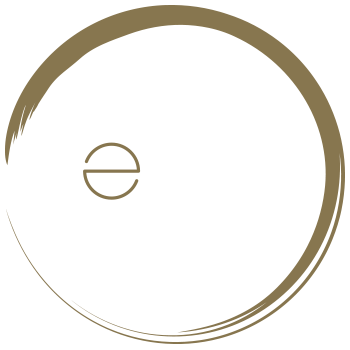How do I know my hair type - 4 simple steps

Many women invest in luxurious and expensive hair care products but often don't achieve the desired results or the perfect hair they're looking for. This is primarily because they may not be using products that are suitable for their hair type. Just as it's important to know your skin type to establish an effective skincare routine, it's crucial to understand your hair type to choose the right products and achieve the goal of having attractive, flaw-free hair. In this article, we will provide you with four simple steps to help you answer the question that's been on your mind: "How do I determine my hair type?"
Regardless of your hair type, you can enhance its beauty and create stunning hairstyles by using high-quality natural hair extensions. These extensions can add length and volume to your hair. Whether you want to achieve curly hair, straight hair, or any other style, you can do it in minutes safely, without the need for heat styling tools. Our collection of natural hair wigs at Zan Hair offers a diverse range of designs, colors, lengths, and sizes to help you achieve your desired look and more.
4 Simple Steps To Help You Determine Your Hair Type:
It's true that just by taking a look at your hair, you can get some surface-level information about its characteristics like waves, straightness, or curliness. However, this isn't enough to accurately determine your hair type. There are other factors that can help you understand the unique features of your hair, so you can choose the right hair care products with precision. In the following four simple steps, we've gathered everything you need to know and consider to understand your hair's needs:
-
Step One: Identify Your Hair Texture

To answer your question about how to determine your hair type, it's crucial to first understand your hair texture. This is a straightforward process. The next time you wash your hair, allow it to air dry naturally without applying any hair care products such as conditioner, serums, or oils. This simple step will help you precisely identify your hair texture, allowing you to classify it correctly into one of these categories:
- Type 1: Straight Hair: If your hair dries perfectly straight without any waves or curls, it means you have smooth and straight hair texture.
- Type 2: Wavy Hair: If your hair changes shape while drying and forms an "S" pattern, your hair falls into the second category, which is wavy hair.
- Type 3: Curly Hair: When your hair dries with loose curls, it belongs to the third type, characterized by a curly texture.
- Type 4: Coily Hair: If your hair changes shape and forms tight spirals with narrow gaps, this means you have coily hair texture.
It's clear that each of these textures requires specific care and the use of suitable products, along with a dedicated hair care routine, to maintain the vitality and uniqueness of your hair.
-
الخطوة الثاني: اعرفي سُمك خصلات شعركِ
Among the necessary steps to answer your question about how to identify your hair type is understanding the thickness of your hair strands, which can generally be divided into three categories:
- Fine or Thin Strands: This refers to hair with thin and delicate strands.
- Medium Strands: Hair with strands of average thickness falls into this category.
- Coarse Strands: If your hair has thick strands, it belongs to this category.
The thickness of your hair strands plays a significant role in how well your hair can hold different hairstyles. Fine and delicate hair struggles to maintain curly or wavy styles for extended periods, whereas hair with medium thickness is more versatile and can hold various curls and waves. On the other hand, hair with coarse strands may be more challenging to style as it can increase in volume significantly and may not work well with certain curling methods. Therefore, knowing which category your hair belongs to is essential for choosing the right products and styles that suit it. Don't worry; the process is quite simple. Just take a strand of your hair and place it next to a sewing thread. If your hair strand is thinner than the sewing thread, it falls into the first category, which is fine or thin strands. If it's thicker than the thread, it belongs to the third category, which is coarse or thick strands. Lastly, if it falls in between, you have medium strands.
-
Step Three: Determine Your Hair Porosity

This term might be new to many, but understanding your hair porosity is crucial in answering your question about how to identify your hair type. Hair porosity refers to its ability to absorb moisture and products, and it's typically divided into three categories.
To determine your hair porosity, perform a simple test using a strand of hair and a cup of water. Place the hair strand in the cup of water and observe where it falls, categorizing your hair porosity as follows:
- High Porosity: If the hair strand sinks to the bottom of the cup when placed in water, it indicates that it absorbs a lot of moisture, meaning your hair has high porosity.
- Normal Porosity: If the hair strand sinks into the water but doesn't touch the bottom of the cup, it suggests your hair absorbs just the right amount of moisture to maintain its health, indicating normal porosity.
- Low Porosity: If the hair strand floats on the water's surface, it means your hair doesn't easily absorb moisture, signifying low porosity.
You might think that high porosity hair would always be overly moist and healthy, but that's not the case. While high porosity hair absorbs moisture quickly due to gaps in the scalp, it also loses that moisture just as rapidly, resulting in brittle, dry, and prone to breakage hair. If you have high porosity hair, it's crucial to start using deep moisturizing masks and nourishing treatments to provide your hair with the necessary moisture. You should also address gaps in your scalp to prevent moisture leakage.
On the contrary, low porosity hair, where the scalp prevents any moisture from reaching the hair, can lead to dry, frizzy, and damaged hair. If you fall into this category, you'll need to use products that help transfer moisture from your scalp to your hair.
-
Step Four: Get to Know Your Scalp Condition

In reality, knowing all that we've covered so far is as important as understanding the condition of your scalp. If your scalp isn't healthy, your hair won't be either, no matter how good its natural quality is. Therefore, it's vital not to underestimate the importance of scalp care and maintaining its health. To determine your scalp condition, follow these simple steps:
Begin by examining your scalp on the day following your hair wash. If you notice that your hair roots appear limp and greasy, it indicates an oily scalp. In this case, a scalp exfoliant for deep cleansing can help remove excess oils and accumulated grease.
On the other hand, if you find that your scalp is flaky, it signifies dryness and the need for nourishment using specific products like natural oils and hair masks. We also recommend using a sulfate-free, moisturizing shampoo when washing your hair to ensure it doesn't strip your scalp of its natural, nourishing oils.
In conclusion, using many hair care products or choosing the most expensive ones doesn't necessarily guarantee the results you desire. Therefore, the most crucial step you should take before purchasing hair care products is identifying your hair type. Once you've done that, it becomes much easier to select the right products and establish a proper care routine to achieve the best results.


